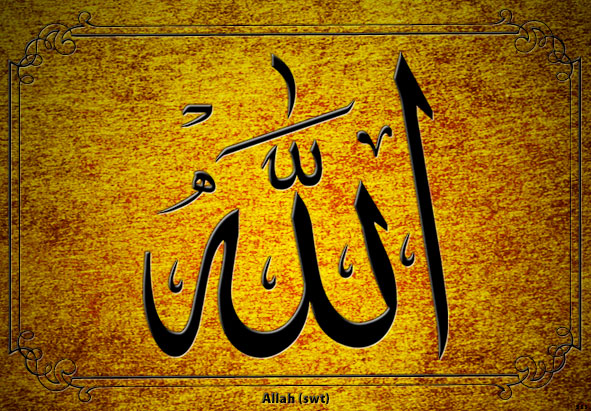Method of the True Salaf Regarding Ambiguities
ON THE ANTHROPOMORPHISM OF “SALAFIS”
Method of the True Salaf Regarding Ambiguities
The scholars of the true Salaf — that is, the pious Muslims of the first three centuries after the Hijra of the Prophet — used to interpret the mutashabihat in the following way: they refuted the unacceptable interpretations but did not specify which one of the acceptable meanings was the intended meaning of the verse or the hadith.
When Imam Malik, al-Shafi`i, and others were asked about the interpretation of the verse al-rahman `ala al-`arsh istawa in particular, and about similar verses in general, they used to say: “Accept these verses and hadith as they were given without believing that they have meanings which pertain to a manner, such as images, descriptions related to creations, and the like.” Imam Ahmad Ibn Hanbal said: “Allah mentioned Establishment (al-istiwa’) and Establishment is only what Allah mentioned about it, not what humans imagine about it.”
From these quotations it is clear that the Salaf, including Imam Ahmad, rejected the meanings that imply a mode or manner (kayf) of “establishment” because specifying the manner implies a resemblance to created things.
Thus we see that the way of the Salaf was mere acceptance of expressions on faith without saying how they are meant, and without additions, subtractions, or substituting meanings imagined to be synonyms, while stressing Allah’s absolute transcendence beyond the characteristics of created things in order to preclude likening Him to His creation. To suggest or cite opinions that they added the terms: “sitting” or “in person” (bi al-dhat) or “sitting in person” or “literally” (haqiqatan) is to give the lie to their insistance on rejecting the kayf of Allah’s establishment.
When forwarding their opinions on this subject, “Salafis” are fond of quoting, not the bila kayf (no-modality) opinions of the great Imams of Ahl al-Sunna, but those of the anthropomorphists that lived around them and deviated from their views, although they claimed to follow their schools. We have already mentioned some of them, like the Hanbalis Ibn Ya`la and al-Zaghuni condemned by Ibn al-Jawzi, and the Hanbalis `Abdullah ibn Ahmad, Ibn Sa`id al-Darimi, and Ibn Khuzayma denounced by al-Razi and Kawthari: As we said before, their assertion that the only alternative to the Jahmi belief that “Allah is in every place” is to say that “He is in one place only, above His throne” is just as false as saying He is in every place for Allah exists without place. Yet the belief that He exists in a place is what yesterday’s and today’s anthropomorphists pass as the opinion of the Salaf. However, just because someone lived in the first three centuries, it does not mean that he represented the doctrine of the Salaf. It will be clear from the forthcoming opinions of the Salaf and Khalaf that the correct position of Ahl al-Sunna never adds “in person” or “literally” — which is to specify a modality — to the mention of Allah’s establishment on the Throne, and that to suggest space in the slightest manner is to leave Islam. b) The Methodology of the Khalaf The Khalaf scholars are those who came in succeeding generations after those of the first three Hijri centuries. They are so-named for their successorship of the inheritance of the Prophet (s), acquiring the knowledge and understanding and of religion. An example of their method is in the interpretation of the verse: yad Allahi fawqa aydihim (58:10) translated as: “Allah’s Hand is over their hands.” Khalaf scholars usually give an explicit meaning to such verses. This way is acceptable insofar as there is a fear that people will otherwise interpret them anthropomorphically, likening Allah to his creations (tashbih) and begin to speak of His “Hand” as a literal (haqiqi) attribute, in the manner of Ibn Taymiyya, Ibn Qayyim, and the early Hanbali anthropomorphists decried by Ibn al-Jawzi. Thus the Khalaf scholars here explain the words yad Allah (Allah’s hand) in this verse as referring to `ahd Allah, that is, “the Covenant with Allah. Similarly they interpreted the word yadayy (Allah’s two hands) in the verse lima khalaktu bi yadayy which is literally “for what I created with My two Hands” as “care” (al-`inaya).
The explanation of the word in other verses confirms the above meanings. The scholars have pointed out that al-yad among the Arabs also signifies strength (al-quwwa). The verse “We have built the heaven with (Our) hands” (51:47) is cited in al-Hafiz al-Zabidi’s massive dictionary of Arabic “Taj al-`Arus” (10:417) as an illustration that “hands” may mean “strength.” Allah says: “And make mention of our bondmen, Abraham, Isaac and Jacob, men of parts (literally of two hands) and vision” (38:45) meaning, “men possessing strength.” It also means ownership (al-mulk) as Allah said: “Lo! the bounty is in Allah’s hand” (3:73). It also means favor, as it is said: “So-and-so has a hand over so-and-so,” to mean that he owes him a favor. It also means a kind of link, as Allah said: “Or he agrees to forego it in whose hand is the marriage tie” (2:237).
As Nawawi said in the passage already quoted from his commentary on Muslim, many of the Salaf also applied such figurative interpretation (ta’wil) of Allah’s “Hand,” as shown from the explanation of aydin (Hands) as meaning “strength” in the verse:
“We have built the heaven with (Our) hands” (51:47) Ibn Jarir al-Tabari said in his Tafsir: Ibn `Abbas said: “It means: with strength.” He reports an identical position from Mujahid, Qatada, Mansur, Ibn Zayd, and Sufyan al-Thawri.1 This is also Imam al-Ash`ari’s explanation according to Ibn Furak in the latter’s recension of Ash`ari’s school.2
These interpretations are all acceptable and they do not imply the slightest denial of any of Allah’s Attributes on which there is consensus. We should nevertheless obligatorily believe that the word yad (hand) does not mean an organ as we know it, in accordance with the verse already cited: “There is nothing like Him whatsoever” (42:11) and that the word yad does not imply a resemblance to creatures.
As for the Prophet’s saying: “The Black Stone is Allah’s right hand,” if it is established as true, then the mind witnesses that Allah is not spatially confined anywhere and is not divisible; and the senses witness that the Black Stone is not literally the right hand of Allah, rather, that it consists in prosperity and blessing.3 Yet we see the excesses of the anthropomorphists at work here also: Ibn Rajab relates in Dhayl tabaqat al-hanabila that Ibn al-Fa’us al-Hanbali gave the hadith a literal meaning: “He used to say: The Black Stone is Allah’s Right Hand literally (haqiqatan).”4 Ash`ari’s biographer Abu Bakr ibn Furak writes that he embarked on a study of kalam (theology) because of this hadith according to Subki in Tabaqat al-shafi`iyya.5
1 Ibn Jarir al-Tabari, Tafsir 7:27.
2 Abu Bakr ibn Furak, Mujarrad Maqalat al-Ash`ari (Beirut, 1987) p. 44.
3 This hadith on the authority of Ibn `Abbas and others is related by Ibn Abi `Umar al-Ma`dani in his Musnad, Tabarani, Suyuti in his Jami` al-saghir 1:516 (#3804-3805), Ibn `Asakir in Tarikh Dimashq 15:90, 92, and others. It is considered da`if (weak) by Ibn al-Jawzi, Ibn `Adi, and Albani. Ibn Qutayba in Gharib al-hadith (3:107(1)) says that it is a saying of Ibn `Abbas.
4 Ibn Rajab, Dhayl tabaqat al-hanabila 7:174-175.
5 al-Subki, Tabaqat al-shafi`iyya 3:53.
Reproduced with permission from Shaykh M. Hisham Kabbani’s _The Repudiation of “Salafi” Innovations_ (Kazi, 1996) p. 108-112
Blessings and Peace on the Prophet, his Family, and his Companions



